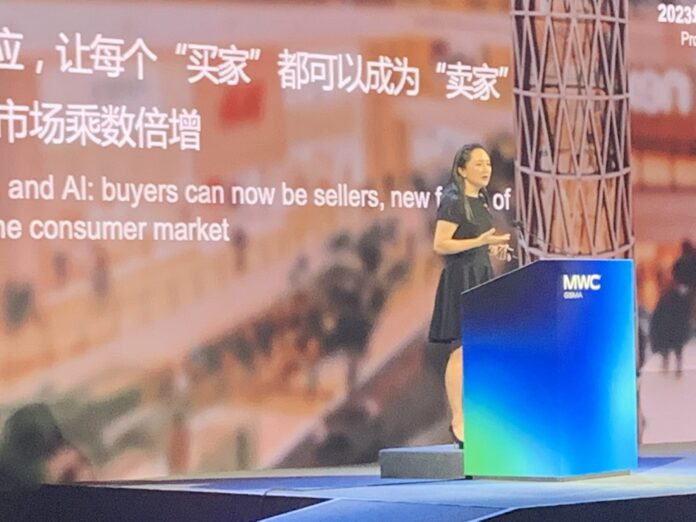SHANGHAI—5G technology needs to become a component of production systems in
order to become a driver of productivity for industries, Sabrina Meng, Huawei’s rotating
chairwoman and CFO, said in a keynote presentation at MWC Shanghai 2023, taking
place this week in Shanghai, China.
“That’s the only way for 5G to see large-scale industrial application. In-depth
understanding of industrial scenarios as well as ongoing improvements to ROI, have
given 5G a foothold in industrial applications,” Meng said.
She added that 5G will give rise to new devices and applications that deliver a more
immersive experience, like 5G New Calling and naked-eye 3D. “5G is also ushering in
a new era of super-connectivity between things, bringing new strength to IoT networks
and driving new forms of productivity,” Meng added.
“5.5G is the next step forward for 5G. 5.5G will feature 10-gigabit downlink speeds,
gigabit uplink speeds, the ability to support 100 billion connections and native AI. It will
not only connect people better but it will also create incredible new business
opportunities with more targeted support for industrial needs in domains like IoT,
sensing, and advanced manufacturing,” the executive said.
5.5G is Huawei’s brand name for advancements in areas like integrated sensing and
communication, Level 4 autonomous driving, “all-scenario IoT” concepts and green
ICT. Huawei also noted that these future networks will enable a 10-fold improvement in
latency, positioning accuracy and reliability. And according to the Chinese vendor,
Passive IoT technology will enable an increase in the number of connected things from
current 10 billion to 100 billion in 2030.
In her keynote speech, Meng added that future digital infrastructure will be based on
massive, complex systems comprising multiple elements which will require systems-
level thinking and design rather than advancements in individual technologies.
“The ladder to success isn’t built on ongoing progress with a single technology. It’s built
on matching technologies to specific scenarios and real-world needs,” she said, adding
that future digital infrastructure will be “deeply integrated into every aspect of people’s
lives, industry and society”.
Meng also said that the industry needs to work closely throughout the entire product
lifecycle, from R&D and procurement, to supply and marketing. “The industry needs to
pave the way for 5G’s ongoing success by working on solution modeling and
optimization, as well as tools and methodologies,” she added.
Meng concluded: “Technologies like 5G, 5.5G, AI and cloud will help us rise with the
tide and take us forward to an intelligent world. The best scenery is always ahead.”

